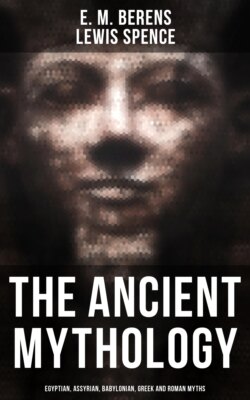Читать книгу The Ancient Mythology: Egyptian, Assyrian, Babylonian, Greek and Roman Myths - Lewis Spence - Страница 115
На сайте Литреса книга снята с продажи.
Anu
ОглавлениеAnu in Assyria did not differ materially from Anu in Babylon, but he suffered, as did other southern deities, from the all-pervading worship of Asshur. He had a temple in Asshur's own city, which was rebuilt by Tiglath-pileser I 641 years after its original foundation. He was regarded in Assyria as lord of the Igigi and Anunnaki, or spirits of heaven and earth, probably the old animistic spirits, and to this circumstance, as well as to the fact that he belonged to the old triad along with Bel and Ea, he probably owed the prolongation of his cult. As an elemental and fundamental god opposition could not possibly displace him, and as ruler of the spirits of air and earth he would have a very strong hold upon the popular imagination. Gods who possess such powers often exist in folk-memory long after the other members of the pantheon which contained them are totally forgotten, and one would scarcely be surprised to find Anu lingering in the shadows of post-Assyrian folk-lore, if any record of such lore could be discovered. Anu was frequently associated with Ramman, but more usually with Bel and Eausas in Babylonia.
